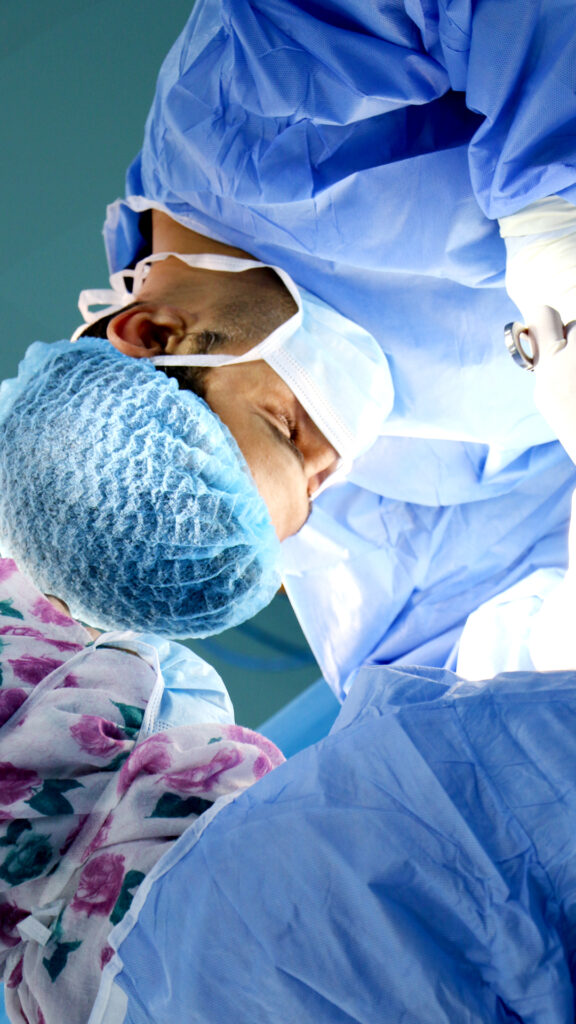
Q-Lasik Assesmet
There’s no need to put off learning if you qualify for Q- LASIK with a free consultation! Dial +91 9335771177 and ask to speak to a patient care assistant when you call Star Eye Hospital.
With this quick and efficient laser surgery for vision correction, your eyesight can be restored. If you have astigmatism, nearsightedness (myopia), farsightedness (hypermetropia), or both, Q-LASIK can permanently liberate you from contacts and eyeglasses. HIGH LEVEL OF CUSTOMER SATISFACTION.
Advanced Lasik laser technologies are used by Star eye during treatment. Almost every day after having Lasik surgery, patients report having vision that is crystal clear. Within one or two weeks, vision returns to being crystal clear. Vision is crisper and clearer after lasik surgery.
Assessment For Q-Lasik

You must be at least 18 years old to receive Q-LASIK. This is so that your eyesight doesn't change while you're still growing and developing before then. Hormonal changes brought on by maturation and puberty might have an impact on your eyes and vision. If you undergo Q- LASIK before your eyes have stabilized, they can alter even after the procedure.

Even if you are older than 18, it's possible that your prescription is still altering. If you want your Q- LASIK procedure to be as successful as possible, maintaining a consistent prescription is essential. Before having Q-LASIK, the majority of doctors advise that you wait for one to two years with a stable prescription.

Your general health may affect your eligibility for Q-LASIK eye surgery. You might not be a good candidate for Q-LASIK if you have diabetes or several autoimmune illnesses. You might not be able to get Q- LASIK if you have certain eye issues. Q- LASIK surgery is difficult or even risky if you have disorders like cataracts or glaucoma. Your eye doctor will assist in guiding you through your options and determining whether any existing medical conditions may prevent you from having Q- LASIK. If you suffer from one of these ailments, another vision correction technique, like PRK, might be more appropriate for you.

If you suffer from dry eye syndrome or have a history of dry eye, recovering from LASIK may be challenging. However, even if you have a history of dry eyes, you might still be eligible to get LASIK. Dry eye testing is done as part of the pre-LASIK examination. In order to prepare for LASIK once symptoms are better under control, your doctor may suggest dry eye treatments if you are prone to them. Using fake tears and taking vitamin supplements are two straightforward ways to do this.

Your vision can only be corrected with some limits with Q-LASIK. Nearsighted people usually benefit the most from Q-LASIK. Patients with astigmatism and farsightedness can also benefit from it. If you are a candidate, your free consultation will tell you; if not, it might be able to inform you of other options.

Other traits that make you a strong candidate are challenging to evaluate independently. The thickness of your cornea is a crucial consideration for Q- LASIK candidacy. Your surgeon can't produce a corneal flap safely if your cornea isn't thick enough. It's always preferable to get a Q- LASIK consultation to see if you are a good candidate because of these variables. Consider Q- LASIK to be your best option for vision correction. The Star Eye Hospital's skilled eye specialists are professionals in figuring out whether patients are a good fit for procedures like Q-LASIK.

There’s no need to put off learning if you qualify for Q- LASIK with a free consultation! Dial +91 9335771177 and ask to speak to a patient care assistant when you call Star Eye Hospital.
Few commonly asked questions about Q-Lasik, these question will help you to understand better about Q-Lasik.
If you are 18 years and above, and generally have good eye health, sufficient corneal tissue for reshaping, and no current eye diseases, such as cataracts or glaucoma.
The LASIK procedure is almost painless. You won’t need to replace a bandage or worry about sutures in your eye with Q-LASIK. You only need a pair of disposable goggles for one day, and even then, they should only be used to shield or cover your eyes. It’s important that you don’t scratch or rub your eyes while they’re healing.
With Q-LASIK, you may stop wearing contacts and glasses. You can go about your daily life without having to worry about taking out your contacts before bed or looking for your misplaced spectacles in vain. A pre-Q-Lasik investigation is required to determine eligibility for receiving a safe and long-lasting treatment for the removal of glasses.

